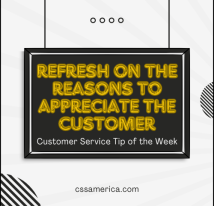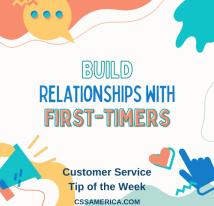
When you provide consulting, research, and training services like we do, you meet a variety of people, and many of them are new individuals to work with even if they are in organizations you’ve worked with for years.
When I meet the new customer or they meet me for the first time, it’s easy to form a quick opinion about each other. Much of the opinion is based on the first few interactions that we have, and often – in today’s world – those first few interactions are via e-mail.
And while my opinion may change down the road, usually the first impression tells much of the story. So here are some aspects of my e-mail interactions with customers that suggest I’m going to enjoy working with them:
- They respond to e-mails quickly, typically in less than a half-day.
- They are specific in their e-mail without being too lengthy.
- They tell me what they’ll do and by when.
- Their messages present organized and clear thoughts.
- There is an intent to answer my question or address the point I explained in my e-mail.
- They use a personal greeting and a personal closing with contact information.
- There’s enough informality to show part of their personality, and usually a little enthusiasm!
People like to like the people with whom they work. That’s part of the reason I’m in this business – because most people who are serving others or trying to retain customers are genuinely nice people.
Even if it’s a simple e-mail response, communicate in a way that the other person can tell that they will enjoy working with you.
Signup for FREE Tips! Contact Us More Resources for You Visit Our Home Page















 The more people that enter the business world having grown up texting, the more the quality of business communications drops. A typical text between friends is rarely what anybody in business would call a professionally-written document. There’s nothing wrong with that, because texting is typically informal dialogue between friends. However, when something is put in writing in an e-mail, it needs to be considered a professional business document.
The more people that enter the business world having grown up texting, the more the quality of business communications drops. A typical text between friends is rarely what anybody in business would call a professionally-written document. There’s nothing wrong with that, because texting is typically informal dialogue between friends. However, when something is put in writing in an e-mail, it needs to be considered a professional business document.






